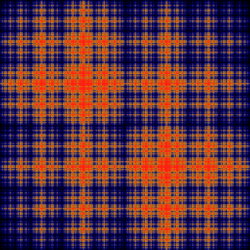Baker's map

Okay kiddo, let me tell you about the Baker's Map! So, imagine you have lots of different colored marbles and you want to put them in a box. But the box has to be really special because every time you put the marbles in it, they move around in a certain way!
The Baker's Map is like that special box. It's a way of organizing things so that they move around in a certain pattern. But instead of marbles, we're talking about numbers on a graph.
The graph is like a big piece of paper with dots on it. Each dot has a number on it. The numbers can be big or small, positive or negative. Now, we want to move the numbers around in a pattern so that they end up in different places on the graph.
Here's how we do it: we take the graph and fold it in half, like a piece of paper. All the dots on one side of the fold go on one side of the new graph, and all the dots on the other side of the fold go on the other side of the new graph. This is like taking a number and moving it from one side of the graph to the other.
Now, we take the new graph and fold it in half again. This time, we fold it in the opposite direction. All the dots on the top of the fold go on one side of the new graph, and all the dots on the bottom of the fold go on the other side of the new graph.
We keep doing this over and over again, folding the graph in half in different directions each time. Each time we do it, the dots move around and end up in different places on the graph.
This is the Baker's Map! It's a way of moving numbers around on a graph in a special pattern. It's like playing a game with the numbers, where we fold the graph like a piece of paper and see where they end up.
The Baker's Map is like that special box. It's a way of organizing things so that they move around in a certain pattern. But instead of marbles, we're talking about numbers on a graph.
The graph is like a big piece of paper with dots on it. Each dot has a number on it. The numbers can be big or small, positive or negative. Now, we want to move the numbers around in a pattern so that they end up in different places on the graph.
Here's how we do it: we take the graph and fold it in half, like a piece of paper. All the dots on one side of the fold go on one side of the new graph, and all the dots on the other side of the fold go on the other side of the new graph. This is like taking a number and moving it from one side of the graph to the other.
Now, we take the new graph and fold it in half again. This time, we fold it in the opposite direction. All the dots on the top of the fold go on one side of the new graph, and all the dots on the bottom of the fold go on the other side of the new graph.
We keep doing this over and over again, folding the graph in half in different directions each time. Each time we do it, the dots move around and end up in different places on the graph.
This is the Baker's Map! It's a way of moving numbers around on a graph in a special pattern. It's like playing a game with the numbers, where we fold the graph like a piece of paper and see where they end up.
Related topics others have asked about:
